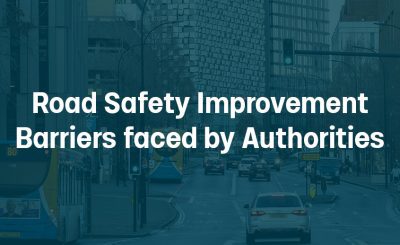UK’s towns and cities are continuously evolving to make way for new developments. Section 106 (also known as planning obligations or planning gain) exists to minimise the adverse effects these developments have on the existing infrastructure and local community.
For transportation, this means ensuring minimal disruption to traffic volumes and promoting safety for road users; but how can local authorities ensure they are getting the best data quality, whilst maximising the potential of what that data can reveal?
To gain a holistic understanding of the impacts of infrastructural changes on road use, advanced data-driven insights can be unlocked using Section 106 funding. From what may have previously been a tick-box exercise, local authorities can now access comprehensive data encompassing vehicle counts, multimodal road user classifications and speeds, to guide decision making with developers, informing road infrastructural and behavioural changes on a long-term basis.
Equipping local authorities with the tools for comprehensive traffic management
In section 106 agreements, decisions can often be made based on data collected from traditional methods such as manual traffic counts. Whilst these methods provide a baseline awareness, they are limited in the data they provide.
Local authorities can benefit from working with developers to take a proactive role in managing their data collection, to ensure they receive the most relevant and reliable information. This approach can help uncover new insights about the wider ecosystem, allowing local authorities to gain an extensive understanding of how road users are utilising the space, and where improvements can be made.
VivaCity offers a cutting edge solution to unlock this information. But what are the benefits of using AI computer vision technology in Section 106 obligations?
Improved traffic flow
Identify congestion hotspots and take proactive measures to improve traffic flow. Traffic signal timings can be adjusted based on real-time traffic conditions, and road layouts can be redesigned to better accommodate traffic patterns. This promotes a smoother flow of traffic, reduced congestion, and shorter travel times for commuters.
Enhanced Safety
Identify potential hazardous areas of the network to understand what measures can be taken to mitigate them. For example by optimising pedestrian crossings, monitoring turning behaviours at junctions, and implementing targeted road safety interventions.
Cost-effective Solution
Reduce the overall cost of traffic monitoring. Detailed data provided by sensors enables more efficient use of resources, as traffic management strategies can be precisely targeted where they are most needed.
Environmental Benefits
By optimising traffic flow and reducing congestion, vehicle emissions are lowered. Additionally, data collected from sensors can be used to promote active travel, such as cycling and walking, further reducing the environmental impact of urban traffic and contributing to Net Zero goals.
Community Engagement
Transparency and community engagement can be vital for the successful implementation of urban development projects. Many local authorities share their transport data with the public, fostering a sense of community involvement and trust. Residents can see first-hand how their local authorities are working to improve traffic conditions and overall quality of life.
A long-term solution
Local authorities have a unique opportunity to use Section 106 agreements to not only meet immediate infrastructural needs, but to invest in long-term, consistent monitoring that benefits the entire community. By using VivaCity’s technology, they can ensure that their road networks and local areas are well equipped to handle the challenges of modern traffic management, measuring activity before, during and after development takes place.
Combining transport data into one place
Combining multiple different solutions to understand traffic monitoring patterns can be costly and time consuming. Local authorities already using VivaCity’s technology for ongoing transport schemes can combine this data with their development transport data.
Using one solution with a single dataset is the most cost and time effective way to understand road use patterns, integrating all traffic management data into one dashboard, to have one single source of truth for the whole network.
With increasing urbanisation and the consequent rise in traffic volumes, leveraging advanced technologies will be crucial in creating sustainable and liveable cities. Get in touch with VivaCity to find out more.
Discover VivaCity’s 3-in-1 solution
With ongoing pressure on budgets it’s important to make the most of any technology you deploy. Versatility is key. By using different lens types – any of which can sit comfortably in the standard sensor case – VivaCity sensors can be used for three purposes: signal control, traffic monitoring and road safety. VivaCity sensors are always connected, so there’s no need to add all features at the point of installation – you can add them as and when they’re needed. When used in combination, the datasets unite to provide holistic and fully comprehensive junction performance metrics, all from the same sensor.
Explore VivaCity’s range of capabilities:
Like our content? Sign up to our newsletter and receive the latest updates in your inbox.










